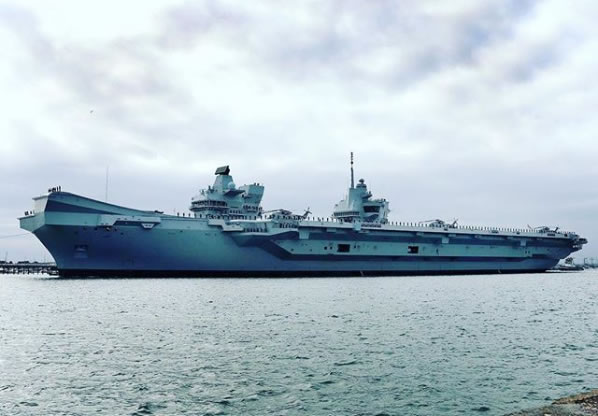Breaking news
Royal Navy Aircraft Carrier Bound for the United States for F-35B Trials.
Royal Navy aircraft carrier, HMS Queen Elizabeth, has departed her home port of Portsmouth, bound for the USA to land fast jets on deck for the very first time. Eight years since a British aircraft carrier last flew a fast jet from her decks, the 65,000-tonne carrier will embark two F-35B test aircraft, from the Integrated Test Force (ITF), based out of Naval Air Station Patuxent River, Maryland.
 Royal Navy aircraft carrier, HMS Queen Elizabeth, has departed her home port of Portsmouth, bound for the USA to land fast jets on deck for the very first time. Royal Navy picture.
Royal Navy aircraft carrier, HMS Queen Elizabeth, has departed her home port of Portsmouth, bound for the USA to land fast jets on deck for the very first time. Royal Navy picture.
Around 200 supporting staff, including pilots, engineers, maintainers and data analysts will be joined by two ‘orange wired’ test aircraft, belonging to the ITF, which are expected to conduct 500 take offs and landings during their 11-week period at sea.
The aim of these initial, or ‘developmental’ trials are to ascertain, through the specially equipped aircraft and sensors around the ship, the operating parameters of the aircraft and ship, in a range of conditions. Similar successful trials were conducted by HMS Queen Elizabeth at sea earlier this year for Rotary Wing aircraft.
Four F‑35B Lightning developmental test pilots, who are members of the ITF, will embark to fly the aircraft; three British, one American. The British personnel comprise a Royal Navy Commander, a Squadron Leader from the Royal Air Force and one civilian test pilot. They will be joined by a Major from the US Marine Corps.
The trials follow the recent arrival into the UK of the first joint Royal Navy, Royal Air Force F-35B jets, based at RAF Marham. ‘Operational testing’, utilising British F-35B aircraft are scheduled to take place on board HMS Queen Elizabeth next year.
The deployment, known as ‘WESTLANT 18’, will be the first-time HMS Queen Elizabeth will have sailed across the Atlantic. As well as the vital deck trials, it will also involve exercises to prove the ability to operate with other nations’ maritime and aviation assets, as well as the landing of Royal Marines and their equipment ashore in the United States, to conduct training with their US counterparts.
The ship will conduct trials in UK waters over the coming days, before departing for the USA later this month.
She will be joined by RFA Tiderace and Plymouth-based type-23 frigate HMS Monmouth, as well as Merlin Mk2 helicopters from 820 Naval Air Squadron, RNAS Culdrose, Mk 4 Merlins from 845 Naval Air Squadron, RNAS Yeovilton and a contingent of Royal Marines from 42 Commando, Plymouth.


























